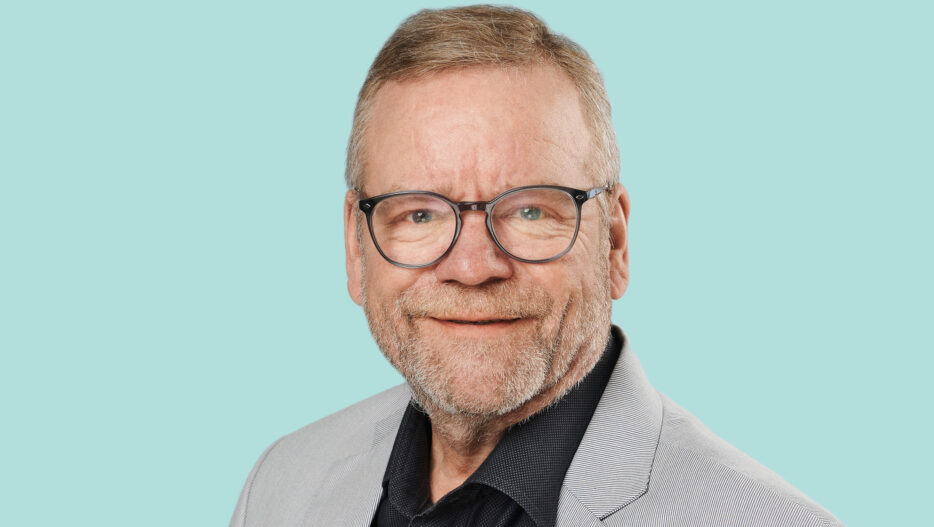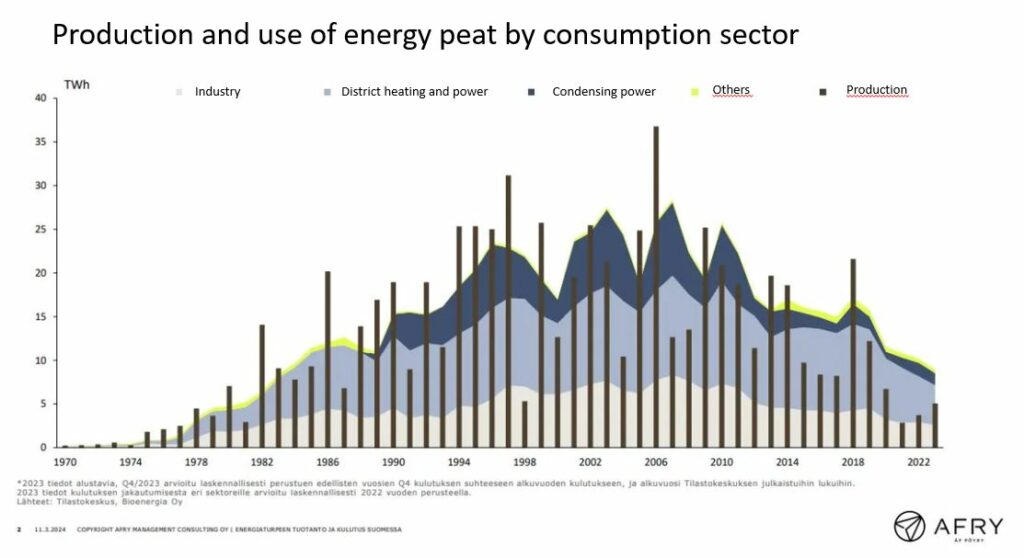
Renewable non-renewable resource
When enough emotion is included and the numbers to be checked are forgotten, peat and peatlands are a dwindling natural resource in Finland. The use of peat must therefore be phased out. Energy peat production began in practice in Finland after the oil crisis caused by the Middle East war in the mid-1970s. From then until today, approximately 730 million cubic meters of energy peat and about 70 million cubic meters of growth and bedding peat have been produced in Finland, i.e. a total of 800 million cubic meters. A huge number, but wait.
According to the Geological Survey of Finland, the amount of peat in Finnish geological bogs (peat thickness over 30 cm and peatland area over 20 hectares) in peatland cubic meters is 70 billion cubic meters. In other words, that figure does not include peat from bogs of less than 20 hectares, which means that there is at least enough safety margin in the calculation. In other words, we have used 1.14% of peat resources over the past 50 years. But when that peat devil regenerates, no matter how classified it is as non-renewable and endangered.
Every year, approximately 35 million cubic meters of new peat grows within Finland’s borders, which means that over the past fifty years, 800 million cubic metres of peat have been harvested and 1,750 million cubic meters of new peat has grown. In other words, Finland’s peatland resources are larger than ever and growth is accelerating, as less than 10 million cubic meters of peat is currently produced per year.

One may wonder why such evidence. Energy peat is only used very little in Finland, and it is needed in a few power plants and to safeguard the security of supply of the Finnish energy sector. But thanks to the tarnished reputation of energy peat, many are trying to stop the very smart use of peat in other forms as well.
At least improving the EU’s self-sufficiency in food production, improving food safety, improving animal welfare, reducing the use of antibiotics and other medicines in meat, milk and egg production are on the table of the next EU Commission. The answer to all these priorities is peat. Either growth peat or bedding peat. Growth peat reduces the need for fertilizers and irrigation in food production, and the end result is clean, safe food. Similarly, peat used on animal farms improves the welfare of animals and keepers and reduces the need to use antibiotics and thus the amount of antibiotic residues in food. We can therefore offer peat as a solution if we did not wrongly try to see it as a problem.
In recent days, posts have started to appear on social media where activated charcoal produced for purifying water and activated carbon is seen as bad because it is made from peat. Although the market often uses Chinese activated charcoal as an alternative to activated carbon at Neova’s Ilomantsi plant, some are opposed to this Finnish high-tech product. And even though the municipality of Ilomantsi is heated with its extra heat, this too has been labelled irresponsible. In Helsinki, the use of waste heat from data centers as a source of district heat is considered very responsible.
And the list of new applications for peat doesn’t end there. For years at Neova, we have studied the manufacture of organic growth promoters, i.e. biostimulants, made from peat and tested them in various applications in Finland and abroad. The use of biostimulants is increasing, especially in arid regions, as they contribute to sustainable agriculture and horticulture and, above all, improve yields and help plants survive dry periods. Another interesting and promising area of research has been the suitability of peat as part of animal feed, because peat supports animal welfare and improves animal growth.
Peat has potential for many completely new applications. The amount of raw materials needed for all these high-value products is marginal compared to the use of energy peat ten years ago. We will come out in due course with these new innovative products. They are produced from responsible raw material, the amount of which in Finland is growing all the time. Will someone else invent another resource, which is a valuable and ever-growing resource?
Ahti Martikainen